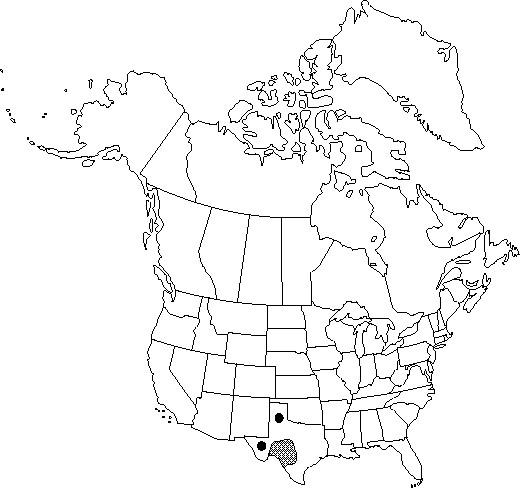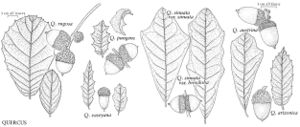Quercus vaseyana
Bull. Torrey Bot. Club 10: 91. 1883.
Shrubs or small trees, evergreen or subevergreen, to 10 m. Bark dark brown, furrowed and exfoliating in long strips. Twigs reddish or grayish brown, 1-1.5 mm diam., short stellate-tomentose or tomentulose, later glabrate or persistently pubescent, rarely glabrous. Buds dark red-brown or gray, round-ovoid, 1-1.5 mm, apex obtuse, sparsely pubescent or glabrate. Leaves: petiole to 5 mm. Leaf blade narrowly lanceolate to usually oblong, mostly planar or slightly convex, 20-60(-90) × 10-20 mm, often rather leathery, base cuneate to rounded, margins coarsely 3-5-toothed on each side or shallowly lobed or entire, with teeth or lobes acute or obtuse, mucronate-tipped, secondary veins 4-6 on each side, usually branched, apex acute, rarely obtuse; surfaces abaxially densely stellate with minute appressed hairs, rarely glabrate and lustrous green, adaxially dark green, lustrous, glabrous or very sparsely stellate-puberulent. Acorns subsessile or on peduncle 2-3 mm; cup saucer-shaped to cup-shaped, 3-4 mm deep × 10 mm wide, margin thin, scales reddish brown, strongly, regularly tuberculate; nut light brown, ovoid to oblong or subcylindric, to 12 × 12 mm, glabrous. Cotyledons distinct.
Phenology: Flowering spring.
Habitat: Dry limestone slopes, oak and mesquite woodlands, juniper woodlands, and canyons and ravines in otherwise dry, open grasslands, sometimes descending into margins of dry scrub
Elevation: 300-600 m
Distribution

Tex., Mexico (Chihuahua, Coahuila, and Nuevo León).
Discussion
Apparent hybridization between Quercus vaseyana and Q. pungens is discussed under the latter species.
Selected References
None.
